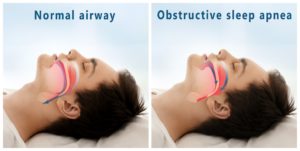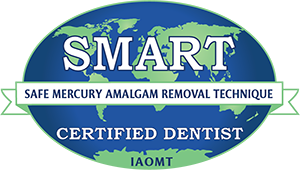Maintain Your Oxygen Levels with an ALF Appliance
June 10, 2020
 At least 18 million Americans live with a disorder that makes them stop breathing frequently throughout the night. Obstructive sleep apnea is a condition that restricts your airway, causing interruptions in breathing while you’re sleeping. This causes fluctuations with your oxygen levels, which can cause potentially deadly complications. Thankfully, your dentist can treat sleep apnea in Southlake using the latest solutions, like an ALF appliance.
At least 18 million Americans live with a disorder that makes them stop breathing frequently throughout the night. Obstructive sleep apnea is a condition that restricts your airway, causing interruptions in breathing while you’re sleeping. This causes fluctuations with your oxygen levels, which can cause potentially deadly complications. Thankfully, your dentist can treat sleep apnea in Southlake using the latest solutions, like an ALF appliance.
Sleep Apnea’s Effects on Your Oxygen Levels
Obstructive sleep apnea results when there is a blockage in the upper airway from the soft tissues in the back of the mouth and throat collapsing. This can cause several pauses in breathing with each interruption lasting for one minute or longer. Even when breathing stops for as few as 10 seconds, your oxygen levels will decline, called oxygen desaturation. Most patients can experience a decrease of 3-4% with each event.
Your oxygen levels are considered abnormal when they fall below 88%. It’s not uncommon for it to drop below 80% for patients with the sleep disorder. When oxygen levels remain abnormal for over 5 minutes, hypoxemia occurs. When you routinely experience low oxygen levels from untreated sleep apnea, it significantly increases your risk of several health issues, like cardiovascular disease and high blood pressure.
Airway measurements are used to determine the severity of obstructive sleep apnea using the Apnea Hypopnea Index (AHI). This is the number that represents the amount of apnea events per hour to classify the condition based on the following:
- None/Minimal: AHI < 5 per hour
- Mild: AHI ≥ 5, but < 15 per hour
- Moderate: AHI ≥ 15, but < 30 per hour
- Severe: AHI ≥ 30 per hour
A CBCT scan is used to evaluate the upper airway dimensions to screen and assess obstructive sleep apnea. The 3D imaging is essential for treating sleep-related breathing disorders using an oral appliance.
Treating Sleep Apnea with an ALF Appliance
An ALF (alternative lightwire functional) appliance uses a thin wire that’s bent to fit the roof of your mouth and your upper teeth to apply gentle pressure across the palate. This provides support to the floor of the nose to keep the airways open. It also improves the positioning of the tongue and the soft palate to stop interruptions in breathing. Although the device is simple, it provides a significant improvement in pauses in breathing to keep your oxygen levels within normal ranges. This is the ideal alternative to a traditional CPAP for patients who have mild-to-moderate sleep apnea.
Your dentist in Southlake can create the customized device you need to breathe easier to promote optimal wellbeing.
About Dr. Preetha Thomas
Dr. Preetha Thomas earned her dental degree and completed advanced training in oral pathology. She’s also undergone hundreds of hours of continuing education courses to provide specialty care, such as sleep apnea therapy. Dr. Thomas uses the latest innovations in sleep dentistry to improve her patients’ quality of life. If you have sleep apnea, she can help. Contact our office today to schedule an appointment.
No Comments
No comments yet.
RSS feed for comments on this post.
Sorry, the comment form is closed at this time.




